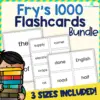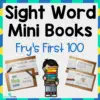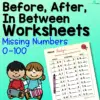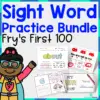Building things is natural for children. They love to put together and take apart different pieces. With some creativity and a lot of imagination, they can make different structures for various purposes.
Encourage children to become builders with these ten activities that are engaging and filled with a lot of fun.
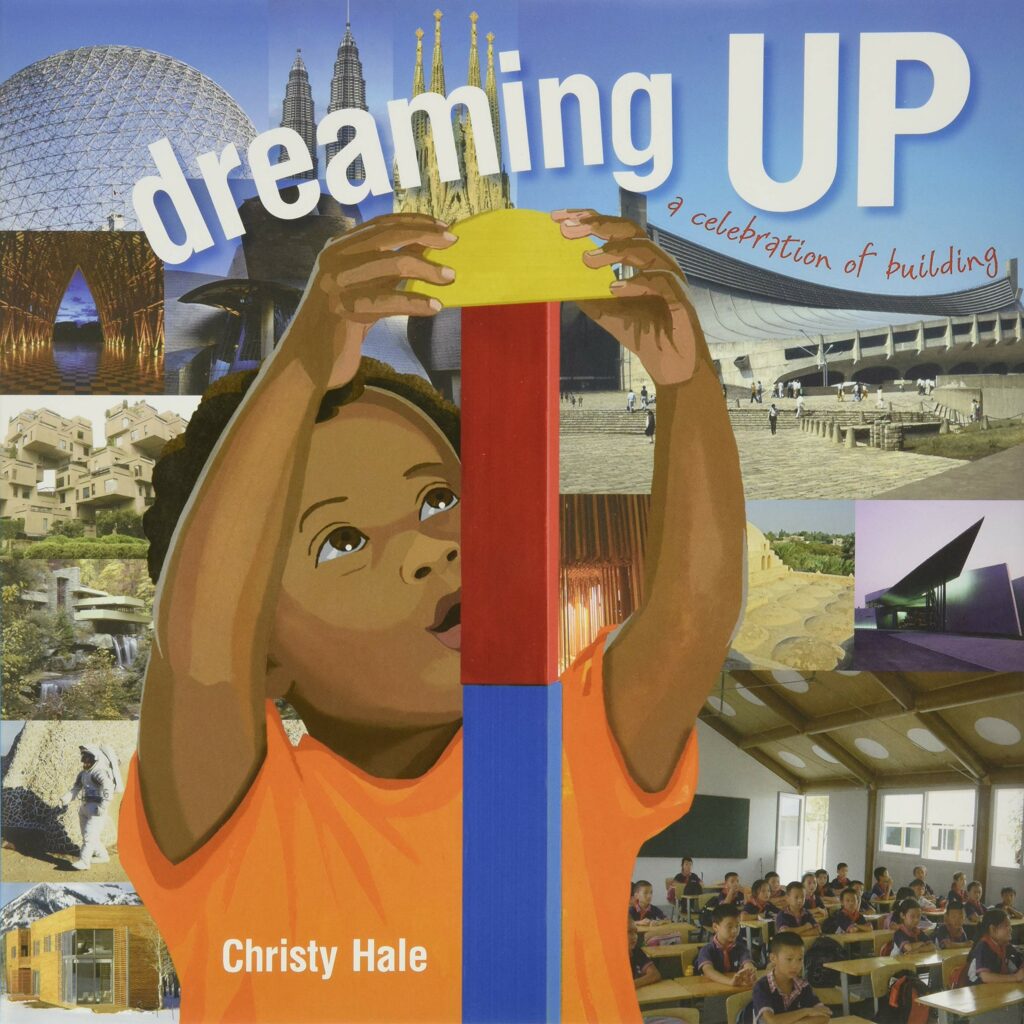
The use of story books about building will help children understand the process that goes through in completing a project. It also exposes them to different details that are essential during this process.
There are ten books on the list that encourage children to try their hand at building activities. One of these books is Dreaming Up by Christy Hale, which shows a connection between iconic structures and children’s imaginative play.
For example, the Petronas Towers in Malaysia were similar to the stack of cups played by the toddlers. Another is the Box House in Colorado, which is comparable to cardboard boxes that children use as pretend houses.
These books can inspire children to think, plan, and build different structures. Use them to jumpstart STEM projects.
Encourage children to imagine a useful building they can make with the given materials. Allow them to solve different problems by thinking critically and creatively.
For this activity, you will need:
- Books about building
For a list of great building books, go to EducationOutside.org.
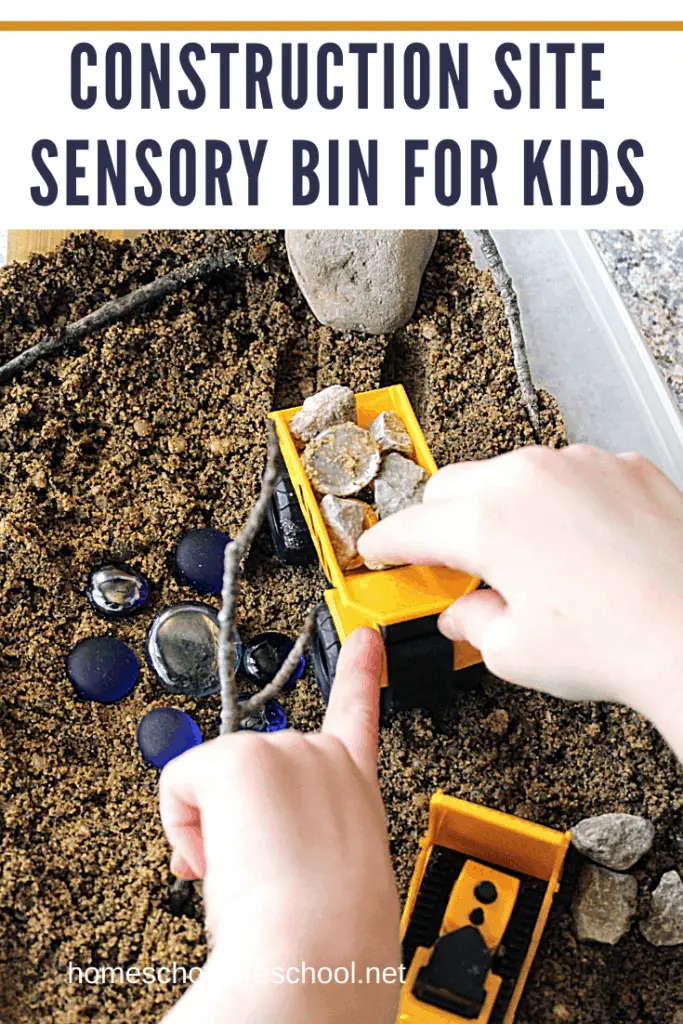
This construction site sensory bin provides a wonderful sensory experience for young children. The gritty texture of the dirt, the smooth stones, bumpy twigs, and uneven-shaped rocks are wonderful materials to stimulate children’s tactile system.
Use a bin large enough for children to put their toy vehicles in. The bin should simulate a construction site where vehicles haul and transfer different materials to different locations.
Start with a clean plastic bin. The site suggests using one with a cover so it can be covered and reused. Pour about a third of the sand into the bin and keep some extra, if needed. Arrange the blue flat glass stones for the site’s pond.
Add the various rocks in different areas and some twigs to make the pretend trees. Finally, place the toy vehicles and let the construction begin.
Extend this activity by hiding unique objects like shells or colorful rocks in the sand for children to discover.
For this activity, you will need:
- Large bin
- Sand
- Twigs
- Rocks
- Flat glass stones
- Construction toy vehicles
For more information on this activity, go to HomeschoolPreschool.net.

This activity hits two birds with one stone, combining strengthening fine motor and literacy skills in one. Children will improve their letter recognition and hand-eye coordination skills when hammering the letters on the cardboard.
It is also a great way to introduce children to the different tools used in construction. Naming the tools and knowing their purpose will increase children’s vocabulary.
Take a piece of cardboard and use a marker to write the letters of the alphabet. Ensure that there are spaces between the letters. Focus on target skills, such as highlighting just the uppercase letters, lowercase letters, or a combination.
Say a letter for children to identify on the board. Another way is to point at a letter and let them name it. Once they can find the letter or name it correctly, they will pound the golf tees using a plastic toy hammer.
Repeat this process until all the letters have been identified.
For this activity, you will need:
- Cardboard
- Marker
- Golf tees
- Toy hammer
For more information on this activity, go to PocketOfPreschool.com.
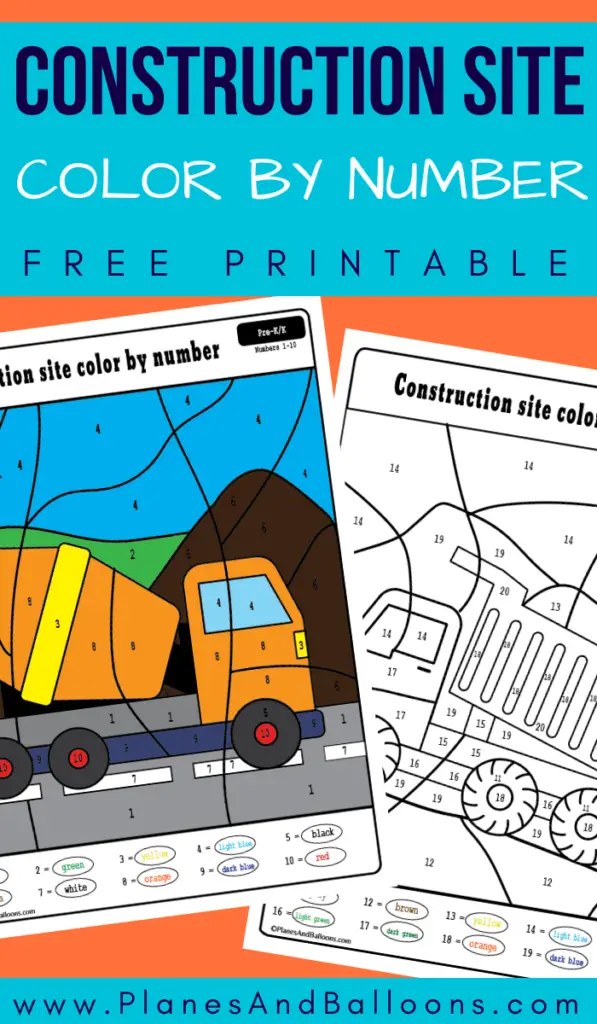
Learn about the different names of construction vehicles and their functions with this nifty printable that will delight young children. Choose between the two vehicles-a mixer truck or a dump truck-based on the children’s number skills.
The mixer truck will allow children to recognize colors and numbers up to ten, while the dump truck is designed for those learning the numbers eleven to twenty. As they color, their fine motor skills will improve.
Download and print these coloring sheets from the site. Provide crayons or markers for children to use and explain the directions well.
Have them color at the number with a corresponding color. The color should not go beyond the lines. Model this step if necessary.
Extend the activity by showing other construction vehicle types and explaining their functions. Use pictures or videos for children to see these in action. These can include bulldozers, cranes, excavators, and forklifts.
For this activity, you will need:
- Printed coloring sheets
- Crayons or markers
For more information on this activity, go to PlanesAndBalloons.com.
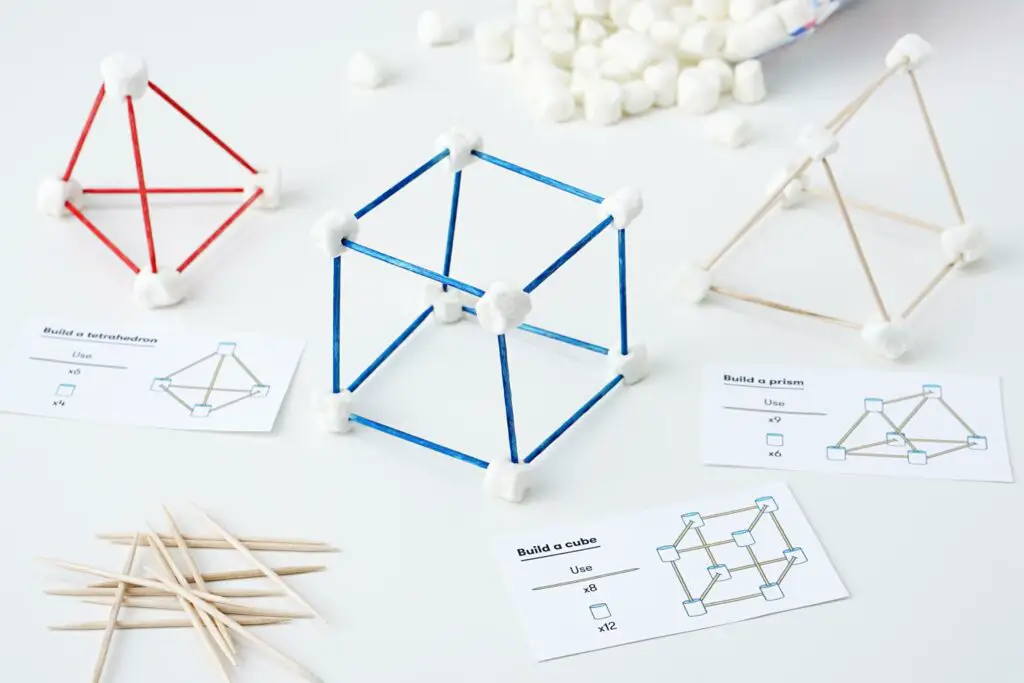
Turn toothpicks into recognizable shapes with this STEM activity introducing children to geometry. Have children build geometric shapes with the given design using marshmallows and toothpicks.
This activity will help build visual-spatial, fine motor, and shape recognition skills. The site provides free printable shape cards called “blueprints” that children can use as a guide when making their toothpick shapes.
Download and print the shape cards from the site. Laminate the cards for durability, if possible. There are six shapes that children can make based on the cards. Choose what perfectly fits their skills.
There are two 2D shapes, which are a triangle and a square. The 3D shapes include a tetrahedron, a prism, a cube, and a pyramid.
Provide the toothpicks and marshmallows and allow children to create the shape based on the shape cards. Younger children may work on the 2D shapes, while older children may require more challenging shapes.
For this activity, you will need:
- Toothpicks
- Mini marshmallows
- Printed shape blueprints
For more information on this activity, go to BigRentz.com.
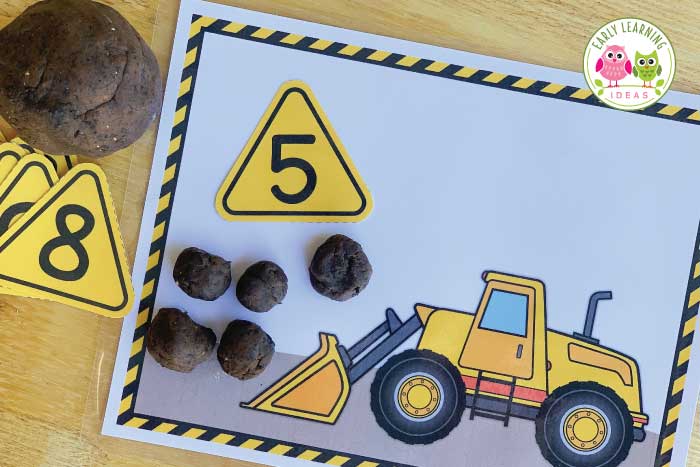
Take playdough to another level by adding materials to create different textures and colors. These can be used for sensory play, as manipulatives in centers, or as fine motor activities.
The site suggests using various materials, such as organic potting soil, organic coconut fiber mix, sand, pebbles, aquarium gravel, pea gravel, mulch, little shells, and beads.
Make a basic playdough using the recipe provided on the site. Choose a preferred material to mix in. For example, add a bit at a time of sand until the desired texture is achieved to make the sand play dough.
Knead the playdough each time sand is added to incorporate them in the clay fully. Have the children use these as counters in math mats or make alphabet letters using playdough letter mats.
Use toy construction tools and vehicles in play areas. The site suggests comparing the different textures in playdough. This will help increase tactile awareness among young children.
For this activity, you will need:
- Playdough
- Sand
- Pebbles, rocks, gravel, shells, beads, etc.
For more information on this activity, go to EarlyLearningIdeas.com.
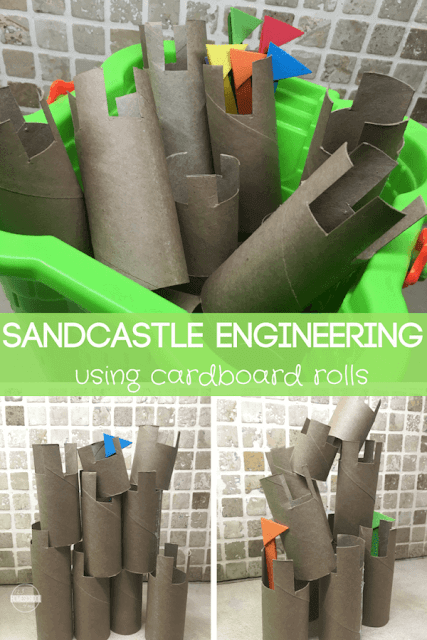
Building a sandcastle indoors is possible with this amazing STEM challenge. Perfect for a beach-themed unit, this activity is possible anytime and is not limited by location or season.
Children will learn to think creatively and critically with this activity while improving their cutting skills. Using recyclable materials is also a great way to teach children to care for the environment.
Explain the objective of this activity to the children. They are to use toilet paper rolls to make a sandcastle-like structure. They can use the rest of the materials to create a tall structure that will not topple over.
They may trim parts of the toilet paper roll and use the stick as support. The craft foam may be used as the castle’s flag. Children must create the tallest sandcastle they can make by stacking the paper rolls.
Allow children to devise techniques that will help them accomplish their mission.
For this activity, you will need:
- Toilet paper rolls
- Craft sticks
- Craft foam
- Scissors
For more information on this activity, go to 123Homeschool4Me.com.
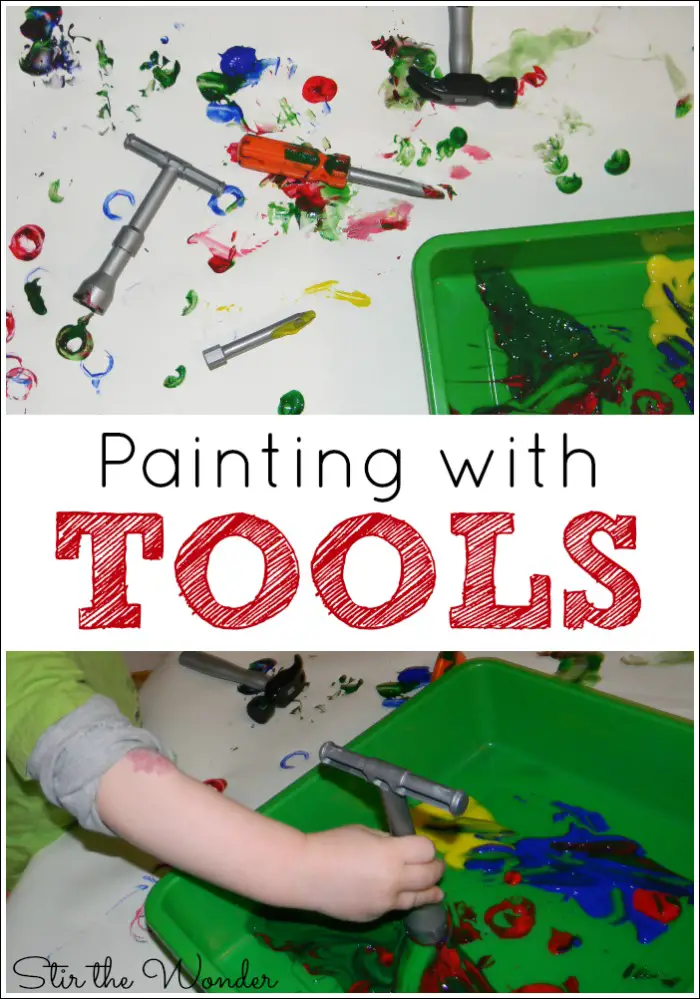
Create art pieces with this stamping technique using toy construction tools. Knowing the tools’ names and their functions enriches children’s vocabulary. It is a great art activity that helps improve children’s fine motor skills.
Children can learn about color mixing using different paint colors to layer their prints. These colors and the shapes created from stamping can also help them learn about patterns.
Take a large sheet of white paper. If it is smaller than the table, secure the ends with sticky tape to prevent it from rolling off. Pour some paint on paper plates or a container.
Have children choose a tool that they like. Let them dip the bottom part of the tool’s handle in paint and press on the paper. The print on some tools will create a solid circle, while others will have a hollow center.
Repeat this process until the paper is covered with a lot of prints.
For this activity, you will need:
- Toy or real construction tools
- Washable paint
- White paper
- Sticky tape
- Scissors
For more information on this activity, go to StirTheWonder.com.
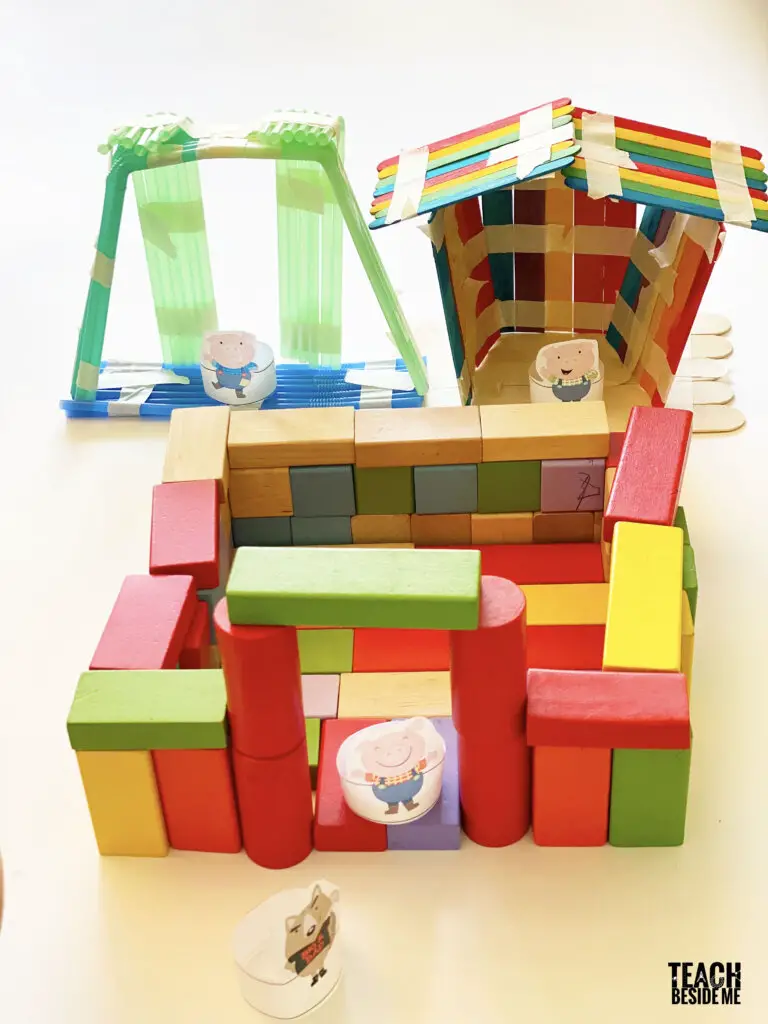
This STEM activity is inspired by the fairy tale The Three Little Pigs. It will challenge young minds to create a sturdy house that can survive the wolf’s destructive blowing using the given materials.
Once the houses are finished, these can be used in pretend play areas to retell the story. Work on these houses will help improve children’s fine motor and critical thinking skills.
Download and print the pigs and wolf figures. Cut these out and use masking tape to make them stand. Next, have the children make the first pig’s house using straw as the primary material.
Children can use rubber bands, masking tape, or string to hold the straw together. Repeat the process for the second pig’s house using craft sticks. Use wooden blocks to make the third pig’s house.
Test the strength of the houses by having an adult blow on them or use a hair dryer, as the site suggests.
For this activity, you will need:
- Printed pigs and wolf figures
- Drinking straws
- Craft sticks
- Wooden blocks
- String
- Masking tape
- Rubber bands
For more information on this activity, go to TeachBesideMe.com.
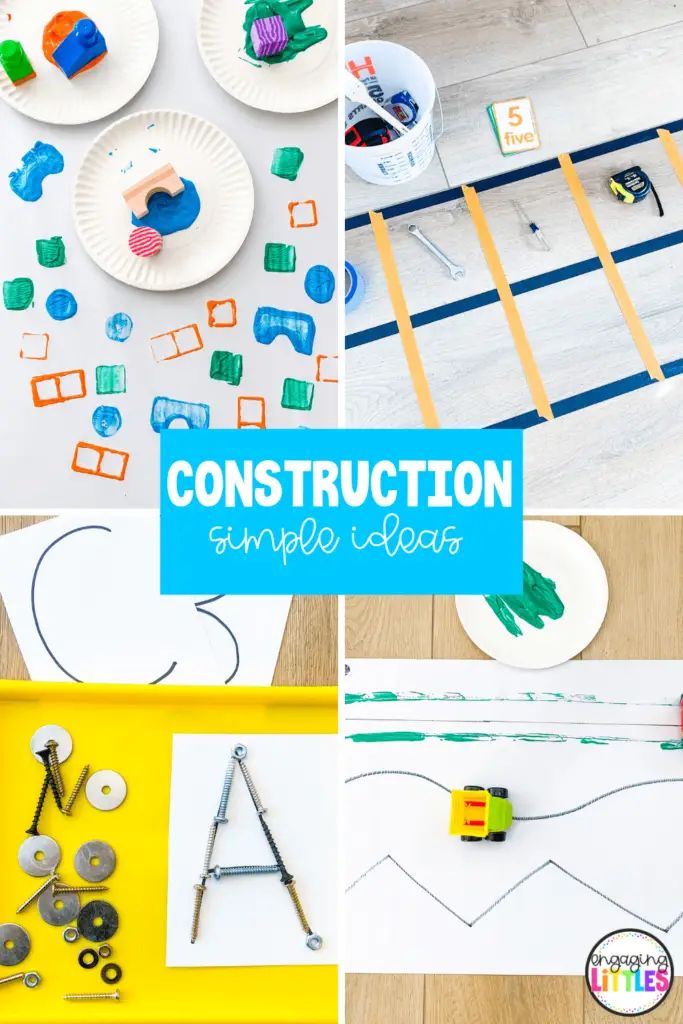
Bulldozer Dance lets children mimic the movement of a bulldozer in action by moving their arms and legs in a specific manner. This activity can help improve children’s gross motor skills, attention, and coordination.
Play the video of the dance and model the bulldozer movement. Let children extend their arms forward with their palms outward. With their legs apart, have them slightly bend their knees while marching.
Work on each of the steps before doing them simultaneously, especially for children who might find the arm and hand combination of movement too complicated.
Extend this activity by adding directions to where they are to march. Have them dance in a straight line, in circles, or back and forth. Use visual cues for these, like line markings on the floor, if possible.
Teach directional words, as well. Use phrases such as move forward or backward and move to the left or right.
For this activity, you will need:
- Bulldozer dance video
For more information on this activity, go to EngagingLittles.com.
Conclusion
These construction activities teach children that building different structures is essential in communities to help them thrive and be livable.
Let children explore careers based on construction and design with these fantastic activities that will help build their different skills.
Thank you for reading. Come back and check out our other activity articles soon.
See more activities you might like:


